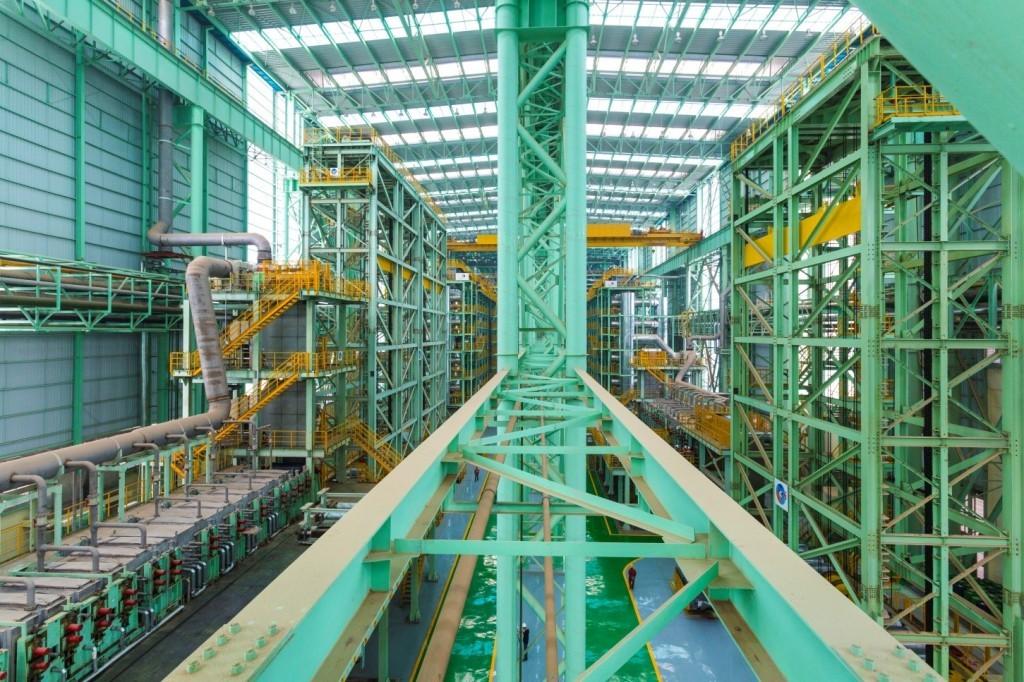CMI to supply a post treatment for its newly supplied Combi-Continuous Annealing – Galvanizing Line (Combi CAL-CGL) to VAMA, China

June 11th 2015
For their high-quality Combi CAL-CGL line, alternating production of both annealed and galvanized strip, Valin ArcelorMittal Automotive Steel Co (VAMA), a joint venture between Arcelor Mittal and Hunan Valin Group, China, ordered an additional post treatment section from CMI. This line as well as a second Continuous Galvanizing Line, have been supplied by CMI and installed at VAMA’s new landmark steel plant in Loudi, Hunan Province, China.
Helping the customer to meet rapid growth in demand for advanced automotive steels in China, the Combi CAL-CGL line, has been designed to attain a maximum speed of 700m/min and to produce close to 900,000 tpy of steel strips with superior surface quality, for high-strength automotive structural components, which improve the safety of vehicles while reducing their weight.
The manufactured new advanced and ultra-high strength (AHSS/ UHSS) steel grades are destined to be supplied to major car manufacturers in China.
The original line layout already made provision for future upgrades such as the post treatment that CMI is to supply under this newly obtained order. The chemical post treatment will be another feature to increase the quality of a line already providing above-average strip quality and production flexibility. It is added for Alu/Si coated strip, to allow the customer to apply an extra protection to the strip by means of a chemical surface passivation treatment for specific applications in the automotive industry.
Essential components of the additional post treatment section are a roll coater and a cooling tower including the latest generation of CMI’s patented Blowstab® technology, a state-of-the-art gas jet based cooling and drying system. CMI is providing the comprehensive range of services from planning, design, manufacture to assembly and commissioning.
While the combi line started production in June 2014, the new equipment is expected to be operational in September 2015.

